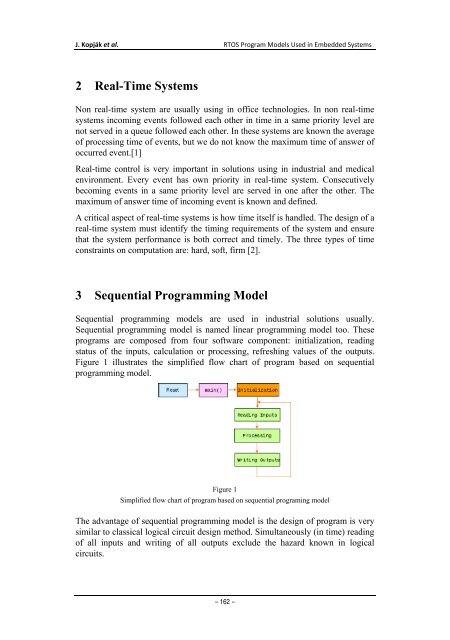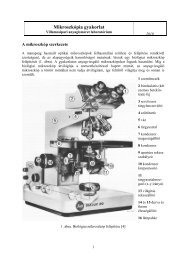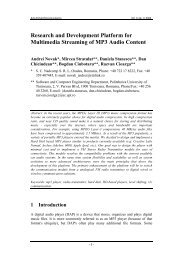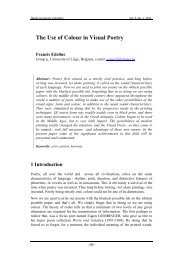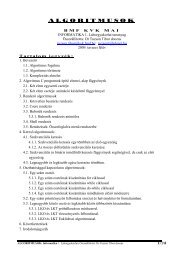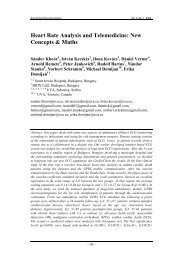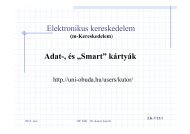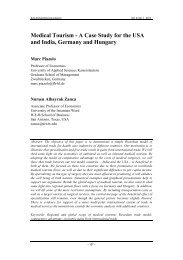RTOS Program Models Used in Embedded Systems
RTOS Program Models Used in Embedded Systems
RTOS Program Models Used in Embedded Systems
You also want an ePaper? Increase the reach of your titles
YUMPU automatically turns print PDFs into web optimized ePapers that Google loves.
J. Kopják et al. <strong>RTOS</strong> <strong>Program</strong> <strong>Models</strong> <strong>Used</strong> <strong>in</strong> <strong>Embedded</strong> <strong>Systems</strong><br />
2 Real-Time <strong>Systems</strong><br />
Non real-time system are usually us<strong>in</strong>g <strong>in</strong> office technologies. In non real-time<br />
systems <strong>in</strong>com<strong>in</strong>g events followed each other <strong>in</strong> time <strong>in</strong> a same priority level are<br />
not served <strong>in</strong> a queue followed each other. In these systems are known the average<br />
of process<strong>in</strong>g time of events, but we do not know the maximum time of answer of<br />
occurred event.[1]<br />
Real-time control is very important <strong>in</strong> solutions us<strong>in</strong>g <strong>in</strong> <strong>in</strong>dustrial and medical<br />
environment. Every event has own priority <strong>in</strong> real-time system. Consecutively<br />
becom<strong>in</strong>g events <strong>in</strong> a same priority level are served <strong>in</strong> one after the other. The<br />
maximum of answer time of <strong>in</strong>com<strong>in</strong>g event is known and def<strong>in</strong>ed.<br />
A critical aspect of real-time systems is how time itself is handled. The design of a<br />
real-time system must identify the tim<strong>in</strong>g requirements of the system and ensure<br />
that the system performance is both correct and timely. The three types of time<br />
constra<strong>in</strong>ts on computation are: hard, soft, firm [2].<br />
3 Sequential <strong>Program</strong>m<strong>in</strong>g Model<br />
Sequential programm<strong>in</strong>g models are used <strong>in</strong> <strong>in</strong>dustrial solutions usually.<br />
Sequential programm<strong>in</strong>g model is named l<strong>in</strong>ear programm<strong>in</strong>g model too. These<br />
programs are composed from four software component: <strong>in</strong>itialization, read<strong>in</strong>g<br />
status of the <strong>in</strong>puts, calculation or process<strong>in</strong>g, refresh<strong>in</strong>g values of the outputs.<br />
Figure 1 illustrates the simplified flow chart of program based on sequential<br />
programm<strong>in</strong>g model.<br />
Figure 1<br />
Simplified flow chart of program based on sequential program<strong>in</strong>g model<br />
The advantage of sequential programm<strong>in</strong>g model is the design of program is very<br />
similar to classical logical circuit design method. Simultaneously (<strong>in</strong> time) read<strong>in</strong>g<br />
of all <strong>in</strong>puts and writ<strong>in</strong>g of all outputs exclude the hazard known <strong>in</strong> logical<br />
circuits.<br />
– 162 –


